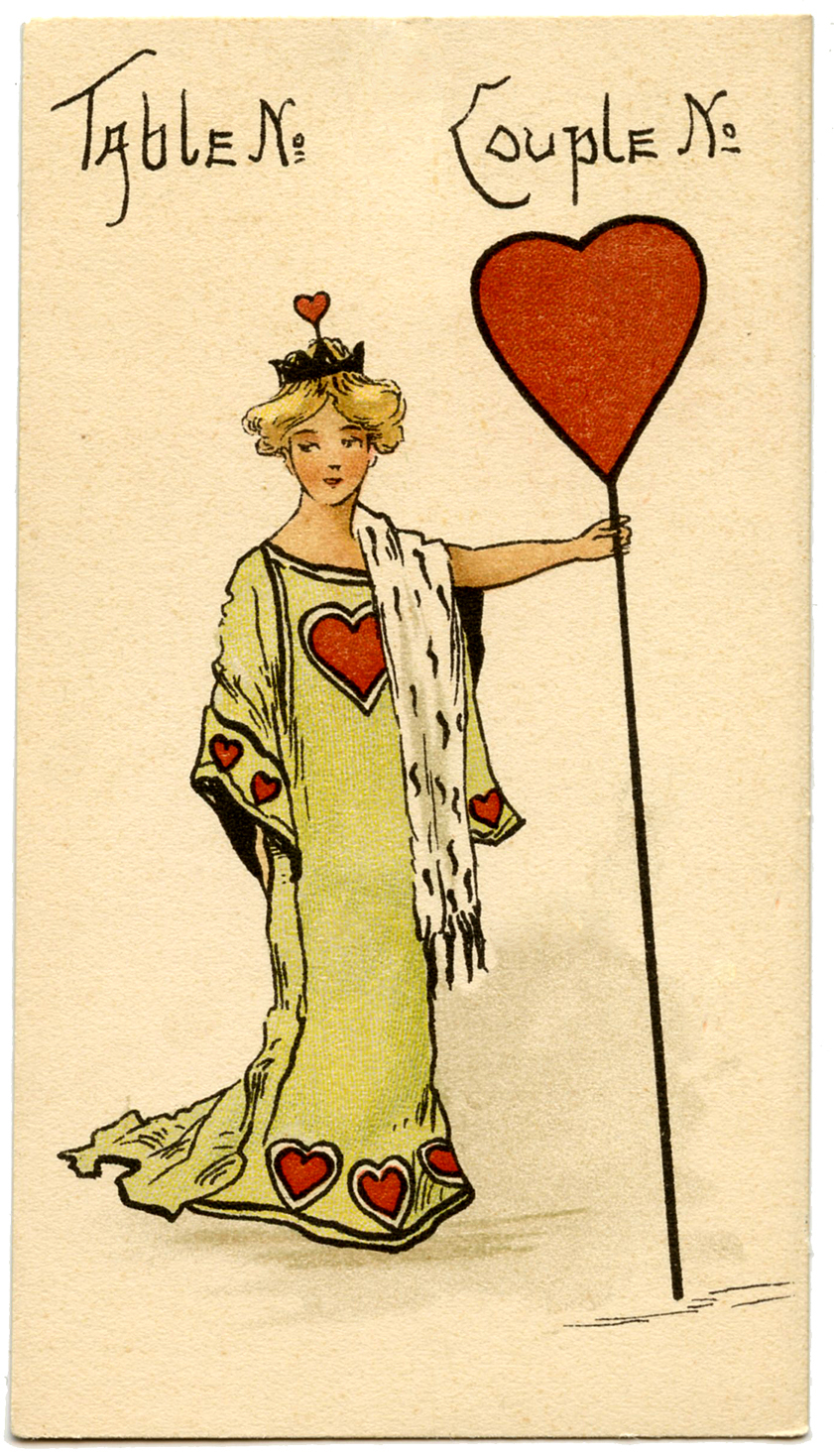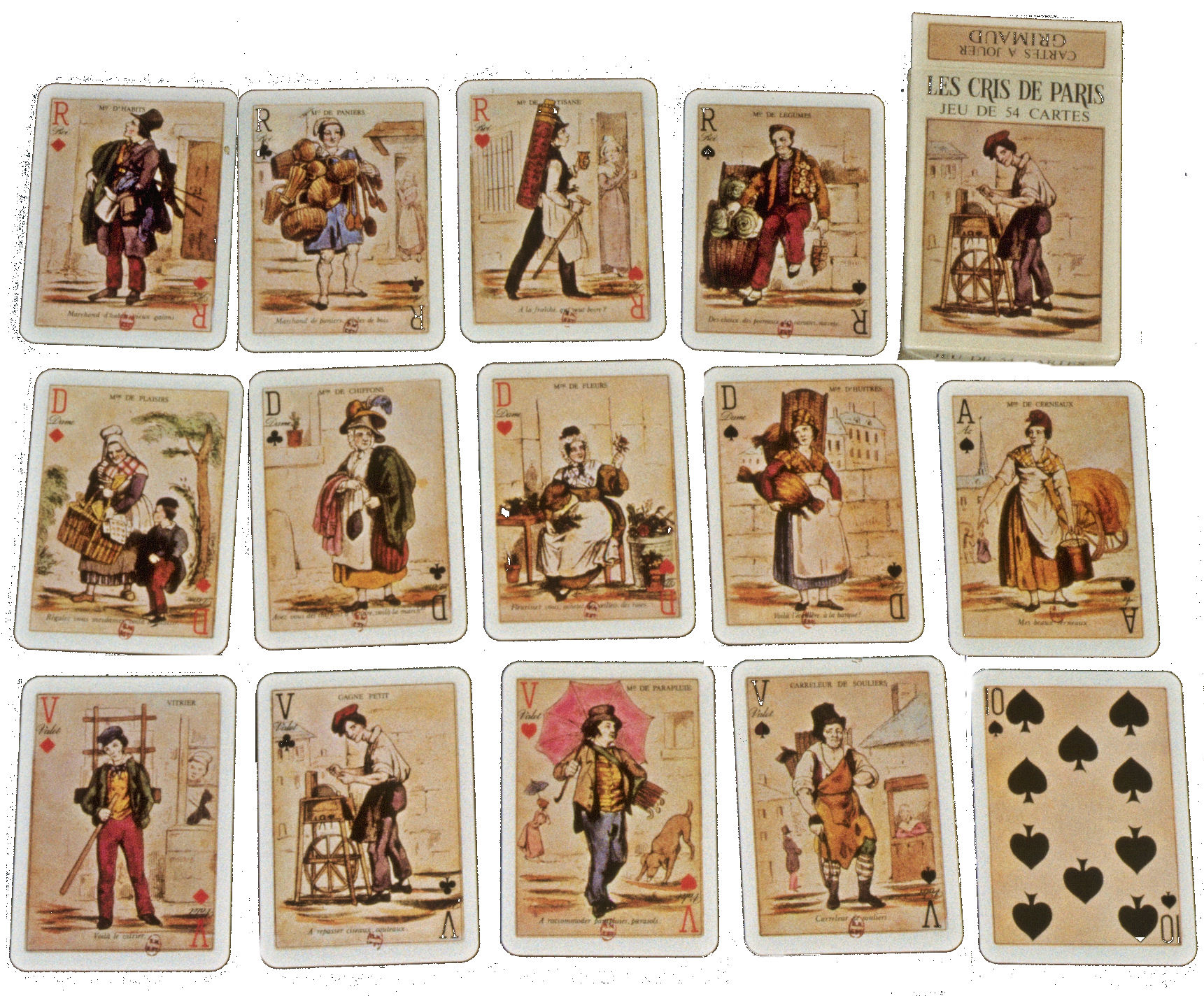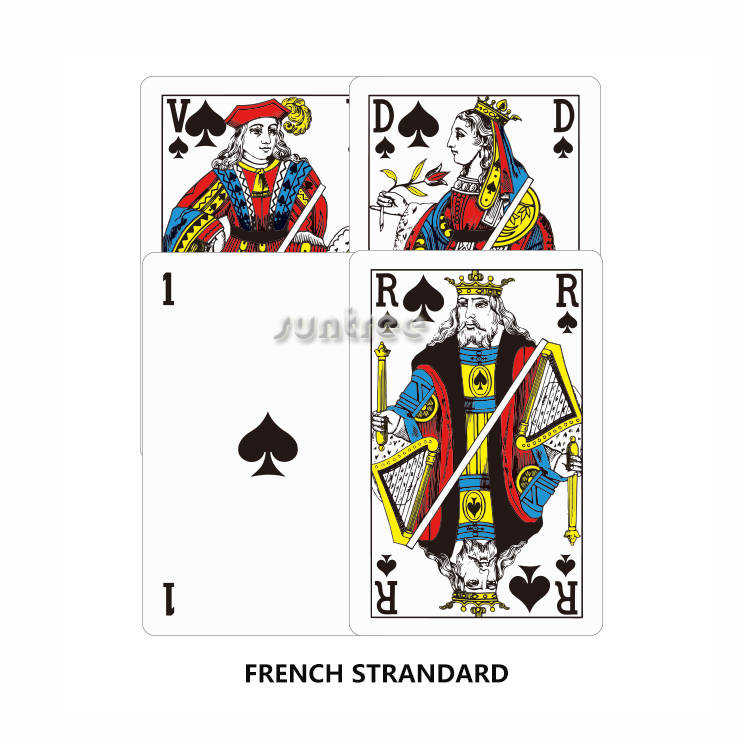French Playing Cards
Find many great new & used options and get the best deals for Vintage French Line Playing Cards - Compagnie Generale Transatlantique at the best online prices at eBay! Free shipping for many products! Tarot cards (also known locally as Tarocks or tarocchi) are an old genre of playing card that is still very popular in France, central and Eastern Europe and Italy. Asia, too, has regional cards such as the.
French Card Games List
Period Playing Cards Our reproduction playing cards are used by historical reenactors around the world, and have been used as props in movies and TV. Check out some of the clips of those scenes inthe video below. The playing cards of this region, particularly those of Rouen, were exported all over Europe. They were especially popular in Flanders, but were also well known in Spain, Russia, England, Switzerland. Get the best deals on French Playing Cards when you shop the largest online selection at eBay.com. Free shipping on many items Browse your favorite brands affordable prices.
French playing cards (jeu de cartes) are cards that use the French suits of trèfles (clovers or clubs ), carreaux (tiles or diamonds ), cœurs (hearts ), and piques (pikes or spades ).Wikipedia


- Joker (playing card)
Playing card found in most modern French-suited card decks, as an addition to the standard four suits . From the second half of the twentieth century, they have also been found in Spanish and Italian suited decks excluding stripped decks.Wikipedia
- Standard 52-card deck
Most common deck of playing cards used today. It includes thirteen ranks in each of the four French suits: clubs, diamonds , hearts and spades , with reversible 'court' or face cards.Wikipedia
- Playing card suit
One of the categories into which the cards of a deck are divided. Most often, each card bears one of several pips (symbols) showing to which suit it belongs; the suit may alternatively or additionally be indicated by the color printed on the card.Wikipedia
- Playing card
Piece of specially prepared card stock, heavy paper, thin cardboard, plastic-coated paper, cotton-paper blend, or thin plastic that is marked with distinguishing motifs. Often the front (face) and back of each card has a finish to make handling easier.Wikipedia
- Face card
Generally used to describe a card that depicts a person as opposed to the pip cards. They are also known as picture cards, or until the early 20th century, coat cards.Wikipedia
- Knight (playing card)
Playing card with a picture of a man riding a horse on it. Face card and is called caballo in Spanish playing cards and cavallo in Italian playing cards.Wikipedia

- Italian playing cards
Playing cards (carte da gioco) have been in Italy since the late 14th century. As Latin suited cards, they use swords (spade), cups (coppe), coins (denari), and clubs (bastoni).Wikipedia
- German playing cards
German playing cards are a style of playing cards used in many parts of Central Europe. Playing cards (Spielkarten) entered German-speaking lands around the late 1370s.Wikipedia
- Hearts (suit)
One of the four suits in playing cards of both the French deck and the German deck. Slightly different: in a French deck and in a German-suited deck.Wikipedia
- Tarot
Pack of playing cards, used from the mid-15th century in various parts of Europe to play games such as Italian tarocchini, French tarot and Austrian Königrufen, of which many are still played today. In the late 18th century, some tarot packs began to be used as a trend for divination via tarot card reading and cartomancy leading to custom packs developed for such occult purposes.Wikipedia
- Clubs (suit)
One of the four suits of playing cards in the standard French deck. It corresponds to the suit of Acorns in a German deck.Wikipedia
- Banner (playing card)
Playing card used in Swiss-suited cards. Pronounced.Wikipedia
- Industrie und Glück
Pattern of French suited playing cards used to play tarock. Inscription found on the second trump card.Wikipedia
- Spades (suit)
One of the four suits of playing cards in the standard French deck. Black heart turned upside down with a stalk at its base and symbolises the pike or halberd, two medieval weapons.Wikipedia
- List of traditional card and tile packs
List of traditional sets of playing cards or gaming tiles such as mahjong tiles or dominoes. A typical traditional pack of playing cards consists of up to 52 regular cards, organized into 4 suits, and optionally some additional cards meant for playing, such as jokers or tarot trumps.Wikipedia
- Unter (playing card)
Court card in the German and Swiss-suited playing cards, which corresponds to the Jack in French decks. Located in the lower part of the card as opposed to the higher ranking Ober (lit.Wikipedia
- Ober (playing card)
Court card in the German and Swiss styles of playing cards, which corresponds in the hierarchy to the Queen in French decks. Ober is usually a nobleman or officer.Wikipedia
- Stripped deck
Set of playing cards from which some cards have been removed. The removed cards are usually the pip cards.Wikipedia
- French tarot
Trick-taking strategy tarot card game played by three to five players using a traditional 78-card tarot deck. Second most popular card game in France and is also known in French-speaking Canada.Wikipedia
- Cups (suit)
One of the four card suits used in Latin-suited playing cards alongside Coins, Swords and Batons. These suits are used in Spanish, Italian and some tarot card packs.Wikipedia
- Swords (suit)
One of the four card suits used in Latin-suited playing cards alongside Coins, Cups and Batons. These suits are used in Spanish, Italian and some tarot card packs.Wikipedia
- Coins (suit)
One of the four card suits used in Latin-suited playing cards alongside Swords, Cups and Batons. These suits are used in Spanish, Italian and some tarot card packs.Wikipedia
- Tarot of Marseilles
One of the standard patterns for the design of tarot cards. Pattern from which many subsequent tarot decks derive.Wikipedia
- King (playing card)
Playing card with a picture of a king on it. Usually the highest-ranking face card.Wikipedia
- Diamonds (suit)
One of the four suits of playing cards in the standard French deck. Only French suit to not have been adapted from the German deck, taking the place of the suit of Bells.Wikipedia
- List of playing-card nicknames
This list of playing card nicknames has the common nicknames for the playing cards in a 52-card deck, as used in some common card games, such as poker. List of nicknames used for playing cards used in most card games which use the standard 52-card pack.Wikipedia
- Gaigel
Card game from the Württemberg region of Germany and is traditionally played with Württemberg suited cards. Swabian variant of Sechsundsechzig and may be played with 2, 3, 4 or 6 players.Wikipedia
- Wendish Schafkopf
Card game for four players that uses a Schafkopf pack of German-suited cards or a Skat pack of French playing cards. For each partnership of two to score at least 61 card points by taking tricks.Wikipedia
- Bohemian Schneider
Card game for two people, which is played with a German-suited Skat pack of 32 cards. Simple trick-taking game, it is often played by older children and is recommended for age 8 upwards.Wikipedia
- Bells (suit)
Bells are a suit in playing cards of the Swiss-suited and German-suited cards. Not adapted by French card makers.Wikipedia
French Playing Cards Wikipedia
Sentences forFrench playing cards
French Playing Cards Games
- The French suits are a derivative of the German suits but are generally considered a separate system on its own.Playing card suit-Wikipedia
- The Joker is unique within the French pack in that it lacks an industry-wide standard appearance.Joker (playing card)-Wikipedia
- The Turnierbild pack was created for official Skat tournaments, using the French suited Berlin pattern but with German colours (green Spades and yellow Diamonds).German playing cards-Wikipedia
- These games use the 54 card French suited Cego or Industrie und Glück decks that strip certain pip cards.Tarot card games-Wikipedia
- Originally played with the Italian-suited Tarot de Marseille, the game is now played with the French-suited Tarot Nouveau.Tarot card games-Wikipedia
- German suited decks tend to have fewer cards than either the French, Spanish, or Italian sets.German playing cards-Wikipedia
- The standard 52-card deck of French playing cards (54 counting jokers) is the most common deck of playing cards used today.Standard 52-card deck-Wikipedia
- It is categorized as a Latin-suited deck and has strong similarities with the Italian-suited deck and less to the French deck.Spanish playing cards-Wikipedia
- German-suited decks are not well known all over these countries including parts of Germany itself as they have been undergoing strong competition from French playing cards since the late 17th-century.German playing cards-Wikipedia
- In French playing cards, the usual rank of a queen is between the king and the jack.Queen (playing card)-Wikipedia
- In Bridge, for which in Germany the French deck is common, it is called by its French name, Cœur.Hearts (suit)-Wikipedia
- The Joker is a playing card found in most modern French-suited card decks, as an addition to the standard four suits (clubs, diamonds, hearts, and spades).Joker (playing card)-Wikipedia
- The following gallery shows the hearts of a 52-card deck of French playing cards.Hearts (suit)-Wikipedia
- Kings from French playing cards:King (playing card)-Wikipedia
- In the standard French deck, an ace has a single suit symbol (a heart, diamond, spade, or club) located in the middle of the card, sometimes large and decorated, especially in the case of the ace of spades.Ace-Wikipedia
- : One of the four suits in a French pack or German pack of cards.Glossary of card game terms-Wikipedia
- In French playing cards and tarot decks, the king immediately outranks the queen.King (playing card)-Wikipedia
- Hearts (Cœur, Herz) is one of the four suits in playing cards of both the French deck and the German deck.Hearts (suit)-Wikipedia
- Around 1480, French card makers adapted this sign into clubs in a French deck (known as clovers in France).Acorns (suit)-Wikipedia
- The following gallery shows the spades in a 52-card deck of French playing cards.Spades (suit)-Wikipedia
- The following gallery shows the diamonds from a 52-card deck of French playing cards.Diamonds (suit)-Wikipedia
- Spades or (four-colour suit) is one of the four suits of playing cards in the standard French deck.Spades (suit)-Wikipedia
- The gallery below shows a suit of Clubs from a French suited deck of 52 cards.Clubs (suit)-Wikipedia
- Diamonds or (four-colour deck) is one of the four suits of playing cards in the standard French deck.Diamonds (suit)-Wikipedia
- Many modern decks use the French deck consisting of an ace (Ass), king (König), queen (Dame), jack (Bauer), 10, 9, 8 and 7 in all four suits (clubs, spades , hearts and diamonds ).Skat (card game)-Wikipedia
- The game is traditionally played with a forty-card Spanish-suited deck with suits of coins and cups (round) and swords and clubs (long), but when it spread to Northern Europe French-suited cards with suits of diamonds and hearts (red) and spades and clubs (black) were usually substituted.Ombre-Wikipedia
- Clubs is one of the four suits of playing cards in the standard French deck.Clubs (suit)-Wikipedia
- The Ober, in Austrian also called the Manderl, is a court card in the German and Swiss styles of playing cards, which corresponds in the hierarchy to the Queen in French decks.Ober (playing card)-Wikipedia
- The Unter, also called the Wenzel or Wenz, and (in Swiss) also the Under, is a court card in the German and Swiss-suited playing cards, which corresponds to the Jack in French decks.Unter (playing card)-Wikipedia
- Italian suited cards normally only refer to cards originating from northeastern Italy around the former Republic of Venice as the rest of Italy uses Spanish suits, French suits or German suits.Italian playing cards-Wikipedia

This will create an email alert. Stay up to date on result for: French playing cards